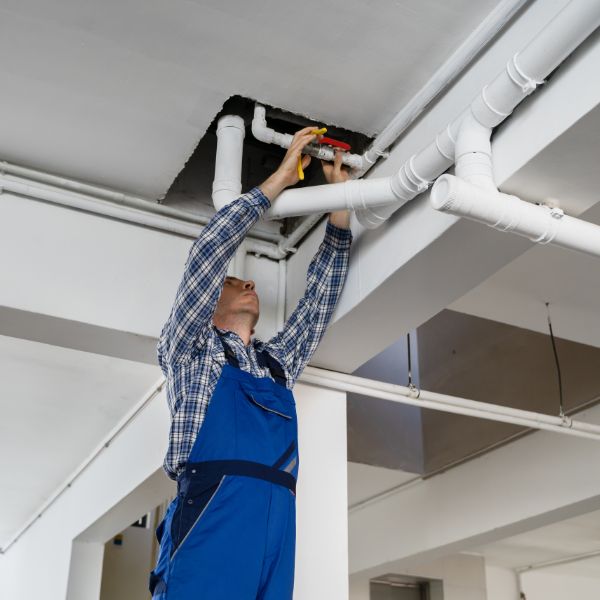
Water damage can occur in many different forms within a property. Knowing the early warning signs of this situation can save a homeowner thousands in damages and repairs. The following are some common ways that water damage happens within residential and commercial properties.
Wherever water is in the structure, the potential for water damage resides. For example, a slowly leaking pipe behind a wall may occur for months. Finally, the drywall weakens or buckles and calls attention to the issue within the wall. Homeowners should do monthly walkthroughs around their property to look for dark or damp spots on walls and ceilings. Also, areas under kitchen and bathroom cabinets should be looked at regularly for leaks.
The water within a structure stays under pressure. During freezing weather, the water in unprotected pipes expands and can cause the line to burst, releasing the pressurized water in the pipes until manually turned off. Suppose a homeowner is in an area expecting freezing weather. In that case, they should wrap pipes exposed to low temperatures until the danger has passed. Property owners should check sprinkler systems regularly for leaking or faulty valves and winterize and drain before temperatures drop below freezing.
Appliances in the home that use water to function have the potential to cause water damage. Washing machines, dishwashers, water heaters, and refrigerators with water and ice makers can leak from damaged hoses or valves. Another way water winds up all over the kitchen floor is from a drip pan overflowing due to clogging from minerals or sediment.
A roof can spring a leak in many ways, causing extensive water damage. Aging roofing materials, clogged gutters, and flashing needing repairs can allow moisture into the structure. Rain or snow melt can damage ceilings, walls, and attic spaces. It’s a good idea for homeowners to look at their roofing monthly. This enables a property owner to catch minor issues before they become significant problems.
Foundation issues can be costly for homeowners. Over time the grade directing water away from the structure can deteriorate and require repair to stop heavy rains from pooling and entering the property. Additionally, foundation or basement wall cracks can allow water to seep into the home.
Some types of water damage occur with little warning, such as flooding. Hurricanes, heavy rainfall causing rivers to rise, or overflowing storm drains result in backups that put inches or even feet of water in a home. Contact with floodwater should be avoided as it can contain anything from sewage to chemicals to debris.
The need for dehumidification equipment becomes apparent when condensation and humidity are an issue in a house. One of the most common ways this type of water damage gets noticed is the appearance of mold on wallpaper or drywall.
Sewer or toilet backups in a home are a serious issue. This type of water is known as “black water,” containing contaminants, and contact with this type of water should be avoided. Homeowners should bring in a professional cleanup service to handle this type of water damage cleanup. Items that come into contact with black water are generally a loss unless they can be disinfected. Standard practices used are immersion cleaning methods with antibacterial or antifungal cleaning agents.
It’s crucial to address water damage promptly to mitigate its effects and prevent secondary issues like mold growth, structural damage, and health hazards. Homeowners should create a checklist unique to their property of areas to check every month to stay ahead of water-related property issues.

